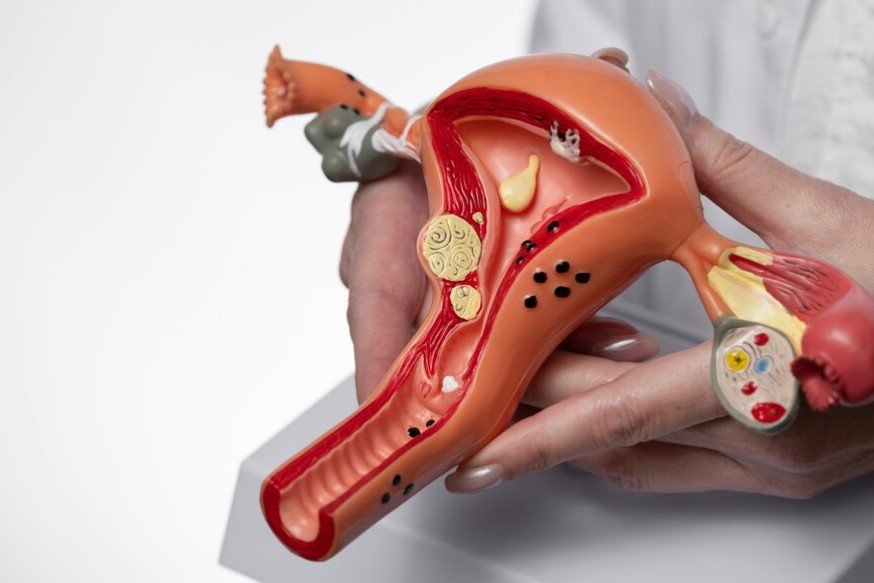Cervical disorders are conditions affecting the cervix, the lower part of the uterus that connects to the vagina. These disorders can range from benign conditions to serious diseases like cervical cancer. Understanding the symptoms, getting an accurate diagnosis, and exploring effective management options are crucial for maintaining cervical health. Dr. Shweta Mendiratta stands out as the Best Gynecologist in Faridabad, providing exceptional care for women with cervical disorders.
Understanding Cervical Disorders
Cervical disorders encompass a variety of conditions, each with its own set of symptoms and treatment options. Common cervical disorders include:
- Cervical Dysplasia: This condition involves abnormal changes in the cervical cells, which can be precursors to cervical cancer if left untreated. Cervical dysplasia is often detected through Pap smears and HPV testing.
- Cervical Infections: Infections caused by sexually transmitted viruses, such as human papillomavirus (HPV), can lead to cervical inflammation and, in some cases, contribute to the development of cervical cancer.
- Cervical Polyps: These are benign growths on the cervix that can cause abnormal bleeding or discharge. While typically non-cancerous, they may require removal if they cause symptoms.
- Cervical Cancer: This is a serious condition where malignant cells form in the tissues of the cervix. It often develops slowly and may not show symptoms until it reaches an advanced stage.
- Cervicitis: Inflammation of the cervix, known as cervicitis, can be caused by infections, allergies, or irritants. It may result in symptoms such as abnormal discharge or bleeding.
Diagnosing Cervical Disorders
Diagnosing cervical disorders involves several steps, often starting with routine screenings and progressing to more specialized tests if necessary. Here’s what you need to know about the diagnostic process:
- Pap Smear (Pap Test): A Pap smear is a crucial screening tool used to detect abnormal cells in the cervix. It is typically performed during a pelvic exam and can identify early signs of dysplasia or cancer.
- HPV Testing: Human papillomavirus (HPV) testing can identify the presence of high-risk HPV strains that are associated with cervical cancer. This test may be done alongside a Pap smear.
- Colposcopy: If abnormal cells are detected, a colposcopy may be performed. This procedure involves examining the cervix with a magnifying instrument called a colposcope, allowing for a closer look at suspicious areas.
- Biopsy: During a colposcopy, a biopsy may be taken to collect a sample of cervical tissue for further examination. This helps determine the presence and severity of abnormal cells.
- Imaging Studies: In some cases, imaging studies such as ultrasounds or MRIs may be used to assess the extent of cervical disorders or cancer.
Managing Cervical Disorders
The management of cervical disorders depends on the specific condition, its severity, and the patient’s overall health. Here are common approaches to treatment:
- Treatment for Cervical Dysplasia: Mild dysplasia may resolve on its own, but more severe cases may require procedures such as cryotherapy (freezing abnormal cells), laser therapy, or a cone biopsy to remove abnormal tissue.
- Managing Cervical Infections: Infections caused by HPV may require antiviral medications or treatments to manage symptoms and reduce the risk of transmission. Regular monitoring is essential to detect any changes in cervical health.
- Removing Cervical Polyps: If cervical polyps cause symptoms or are suspected to be problematic, they can be removed through a minor surgical procedure, often performed in a gynecologist’s office.
- Treating Cervical Cancer: Treatment for cervical cancer may involve surgery, radiation therapy, chemotherapy, or a combination of these approaches. The specific treatment plan depends on the stage and type of cancer.
- Addressing Cervicitis: Treatment for cervicitis focuses on addressing the underlying cause, whether it’s an infection or irritation. This may involve antibiotics, avoiding irritants, or managing allergies.
Why Choose Dr. Shweta Mendiratta
Dr. Shweta Mendiratta is renowned as one of the Top Gynaecologists in Faridabad, known for her expertise in managing cervical disorders. Here’s why she is considered the Best Gynecologist in Faridabad:
- Comprehensive Care: Dr. Shweta Mendiratta provides thorough evaluations and personalized treatment plans tailored to each patient’s needs, ensuring effective management of cervical disorders.
- Expertise in Diagnosis: With her extensive experience, Dr. Shweta Mendiratta excels in diagnosing and treating a wide range of cervical conditions, from routine screenings to complex cases.
- Patient-Centered Approach: Dr. Mendiratta is known for her compassionate care, focusing on patient education and support throughout the diagnosis and treatment process.
- Advanced Treatment Options: Utilizing the latest medical advancements, Dr. Mendiratta offers cutting-edge treatments and procedures to manage cervical disorders effectively.
Conclusion
Cervical disorders are diverse and can significantly impact a woman’s health. Early diagnosis and appropriate management are essential for maintaining cervical health and preventing serious complications. Dr. Shweta Mendiratta, recognized as one of the Best Gynecologists in Faridabad, offers expert care for women dealing with cervical disorders. By understanding the symptoms, getting a proper diagnosis, and following a tailored treatment plan, women can effectively manage cervical conditions and ensure their overall well-being. If you’re searching for a trusted Gynecologist near you, Dr. Mendiratta is a top choice for comprehensive and compassionate care.


